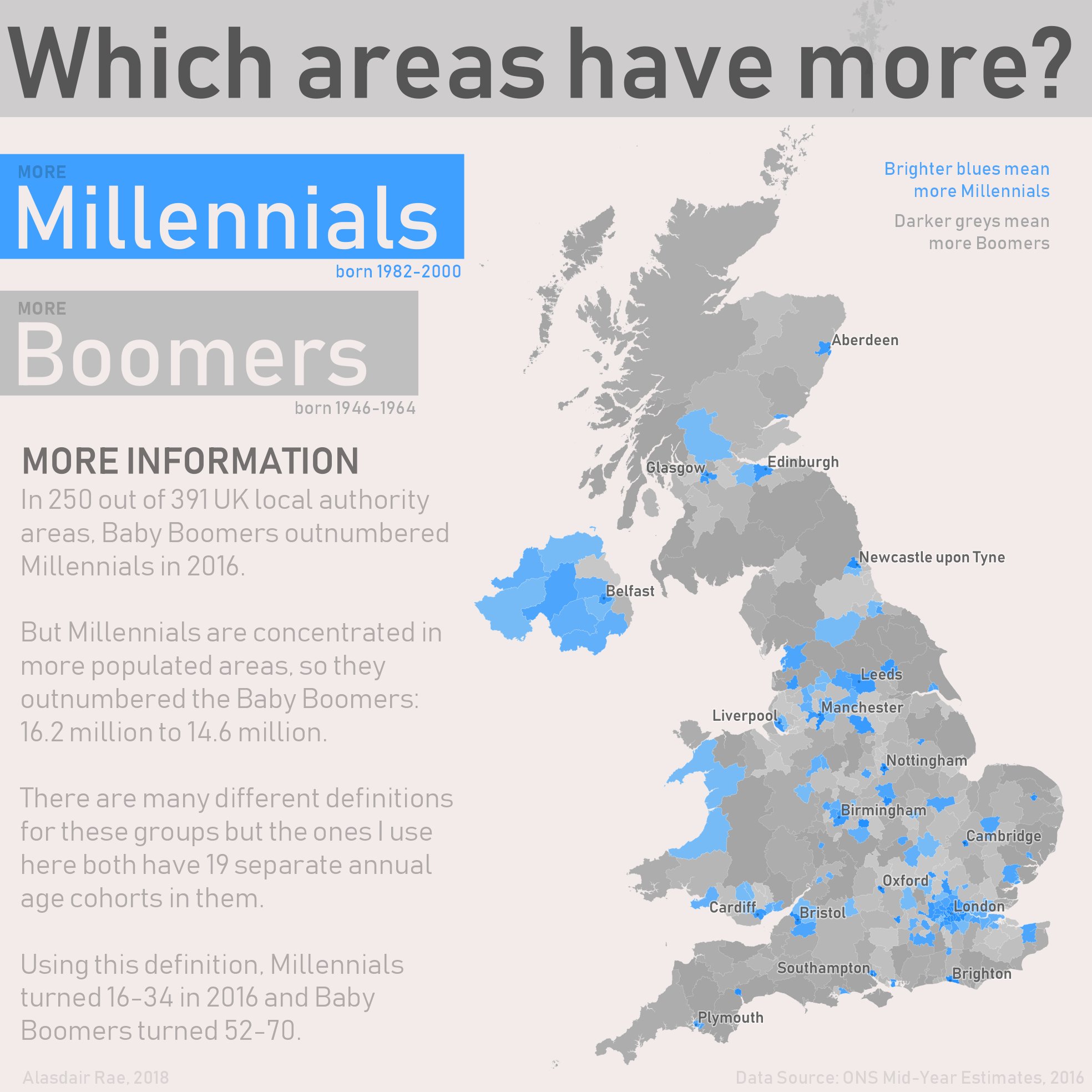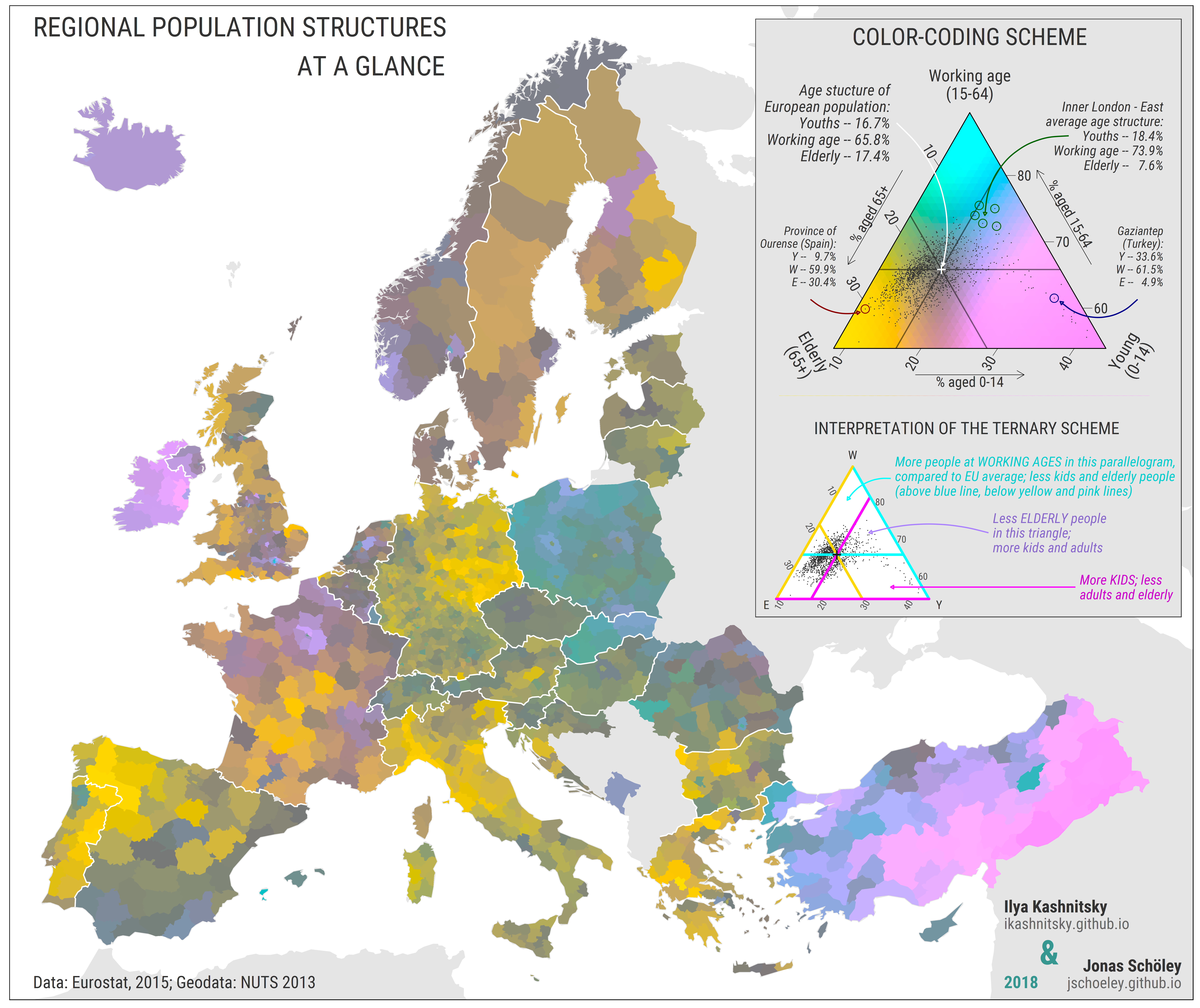Which areas of the UK have more millennials?
There’s something revealing about where people of different generations tend to live. Not just interesting trivia, but clues to how the UK’s towns and cities are growing, changing, and aging. That’s exactly what geographer and data expert Alasdair Rae set out to explore in his 2018 map, which compares the number of Millennials to Baby Boomers across the United Kingdom.

The map shows areas shaded in blue where Millennials—defined here as those born between 1982 and 2000—outnumber Baby Boomers (born 1946–1964). Darker grey areas represent places where Boomers are still more numerous. It’s based on official population data from the UK’s Office for National Statistics (ONS), using 2016 estimates.
Out of 391 local authority areas in the UK, Baby Boomers came out ahead in 250 of them. But here’s the twist: despite that majority, Millennials were more numerous overall—16.2 million compared to 14.6 million Boomers. Why? Because the Millennials are concentrated in bigger, denser, more urban places.
Where Millennials Are Winning—and Why
Take a closer look at the blue zones on the map, and you’ll notice a clear trend: Millennials are heavily clustered in major cities and urban centres.
London is the obvious magnet. As the UK’s largest city, it pulls in younger people for work, study, and opportunity. According to population pyramids, people in their 20s and 30s make up a disproportionately large chunk of the capital’s population.
Other urban hubs follow the same pattern. Manchester, Birmingham, Leeds, Glasgow, and Liverpool all appear in blue. These are cities with universities, tech jobs, and growing creative sectors. The same goes for places like Bristol, Cambridge, and Edinburgh—dynamic cities that attract young professionals and students alike.
In Northern Ireland, nearly the entire region leans blue. Belfast, with its student population and relatively affordable housing compared to mainland UK, clearly attracts Millennials as well.
This trend isn’t just about personal preference—it’s about economics. Younger adults go where the jobs are. Where public transport is reliable. Where the nightlife and food scene are vibrant. Where renting a flat with three friends is easier than buying a home in the suburbs.
Where Boomers Still Outnumber Millennials
Now look at the grey areas. These are places where Baby Boomers still dominate demographically. Think rural counties, retirement-friendly towns, and smaller cities where young people often move away after school.
Large parts of the South West, East Midlands, East of England, and the South Coast fall into this category. These regions are aging not necessarily because young people aren’t born there—but because many leave.
Places like Dorset, Lincolnshire, Devon, and parts of Norfolk have long attracted retirees for their quieter pace of life, lower property prices, and natural beauty. Over time, that has tilted the balance even more in favor of older age groups.
Some suburbs and commuter towns around London, like Surrey and Hertfordshire, also show more Boomers than Millennials. That may be because people who moved there decades ago simply stayed—and their kids, now grown, have moved elsewhere.








